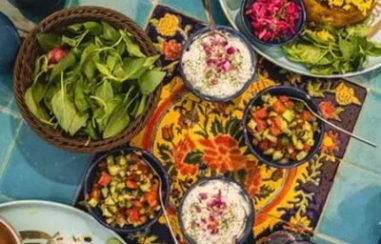Isfahan captivates the heart of every tourist with its abundance of historical structures. Among its most famous historical monuments is the Chehel Sotoun Palace; a royal garden that remains majestic to this day. Parsi Tours Iran Travel Agency invites you to join us on this exciting exploration.
Introduction to Chehel Sotoun Palace
The Chehel Sotoun Palace, also known as the Chehel Sotoun Garden Museum, is a surviving example of royal gardens from the Safavid era in the city of Isfahan. In fact, this garden is a small part of the extensive Jahan Nama Garden, where Shah Abbas the Great initiated the construction of the first core of the Chehel Sotoun Palace by building a pavilion within it. Despite damages, this historical heritage is still among the most famous and popular attractions in Isfahan, offering stunning beauty to visitors and tourists.
Chehel Sotoun Garden was formed within the city among other gardens, and was accessible from them. A series of these gardens, which were aligned along Chaharbagh Avenue, formed one of the foundations of Safavid-era Isfahan. The role of Chehel Sotoun Garden is distinguished in this regard; it served as a link between this foundation and another urban foundation, namely the Naqsh-e Jahan Square.
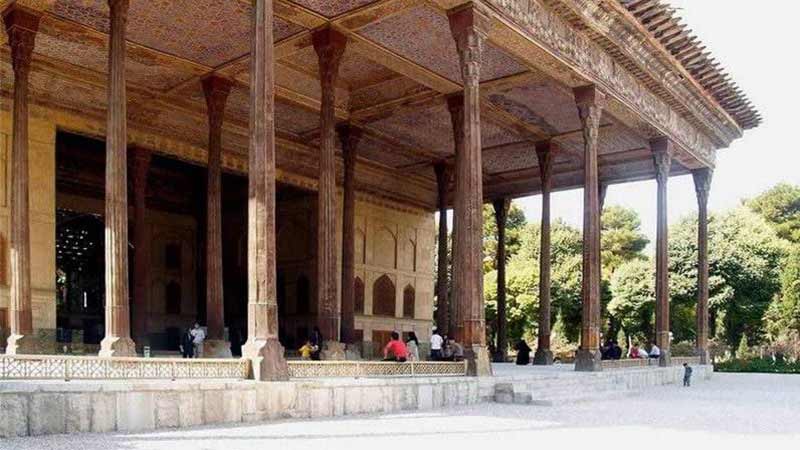
The garden has three entrance gates, with the oldest facing east. Upon entering the garden through the main gate and covering a modest distance, visitors reach a large pool in front of the building and then the building itself. The main axis of the garden, marked by trees on both sides, directs movement towards the main palace. The garden has a very slight slope, facilitating water flow in its channels.
In the past, the garden’s water was supplied from a branch of the “Feden” river and, after traversing the length of the garden, entered Naqsh-e Jahan Square. Currently, the garden’s water is sourced from a deep well. The garden’s vegetation includes Iranian pine trees, elm, black poplar, plane trees, and juniper. Seasonal flowers planted in the garden’s flowerbeds are cultivated in the greenhouse located in the southern part of the garden. The palace covers an area of 2120 square meters, and the building is situated one meter above the garden level.
Chehel Sotoun Garden, within its urban setting, is separated from its surroundings by walls, and its connection with other urban elements is now quite limited. In the past, connections between major urban elements like Naqsh-e Jahan Square and other public buildings symbolized the city’s structure. These internal connections were established using small covered spaces like entrances and annexes.
Where is Chehel Sotoun Palace?
Chehel Sotoun Palace is located to the east of Lower Chaharbagh Avenue, south of Sepah Street, and west of Naqsh-e Jahan Square. To access it, you can use public transport or a personal vehicle. The distance from Imam Hossein Metro Station or the bus station to the palace is walkable. If driving, you can use the public parking spaces on nearby streets. If you’re coming from Naqsh-e Jahan Square, you can easily reach the palace on foot. For this, head towards the Government Gate on Sepah Street and turn left at the intersection with Estanadari Street. Shortly after, you will see the Chehel Sotoun Palace Museum.
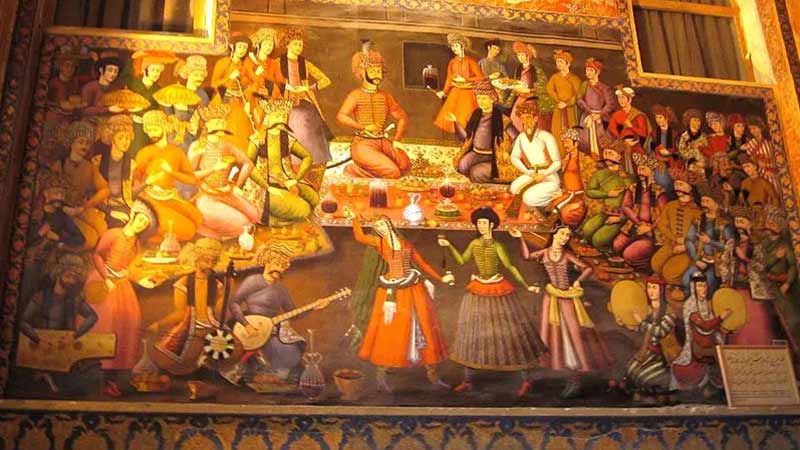
The Naming of Chehel Sotoun Palace
The main veranda of the Chehel Sotoun Palace rests on twenty sturdy columns. Many researchers believe that the palace’s name (“Forty Columns”) comes from the reflection of these twenty columns on the large, beautiful pool of the mansion. Additionally, the significance of the number 40 in Persian literature (representing multitude and abundance) may be another reason for the naming.
History of Chehel Sotoun Palace
Chehel Sotoun Garden in Isfahan is an example of a royal garden from the Safavid period. Until 1948, due to a lack of information, commenting on the construction date of Chehel Sotoun was difficult. In that year, poems on two plaques were discovered under the plaster on the front of the palace hall. One, shorter and on a pink background, attributed the construction of the hall to Shah Abbas II and dated its completion to 1057 AH. The longer one, with plaster reliefs on a blue background, spoke of renovations during the reign of Shah Sultan Hossein.
One of Shah Abbas the Great’s urban projects, after selecting Isfahan as the capital in 1007 AH, was the creation of the beautiful and long Chaharbagh Avenue and several surrounding gardens. These included the Khargaah Garden, Bulbul Garden, Hasht Behesht Garden, Fathabad Garden, Kaj Garden, Nastaran Garden, Khelat Garden, and Angoorstan Garden. The consecutive placement of these gardens, reminiscent of the concept of “garden within a garden,” was among the urban design principles of Isfahan. Today, except for Hasht Behesht and Chehel Sotoun, the other gardens have disappeared, leaving only their names behind.
With the selection of Isfahan as the capital and the city’s expansion towards the south and the construction of Naqsh-e Jahan Square, the establishment of royal palaces by Sheikh Bahai was initiated. The selection of a vast space in the government compound reflected Sheikh Bahai’s taste, talent, and creativity, a renowned scholar of the Safavid era. This complex of palaces started with Ali Qapu and extended to the main and central Chaharbagh-e Abbasi Square. In this large area, several royal palaces and buildings such as the Ashraf Hall, Jebhe Khaneh, Rakib Khaneh, Kashik Khaneh, Talar Tavileh, Hasht Behesht Palace, Towhid Khaneh, and other structures were built.
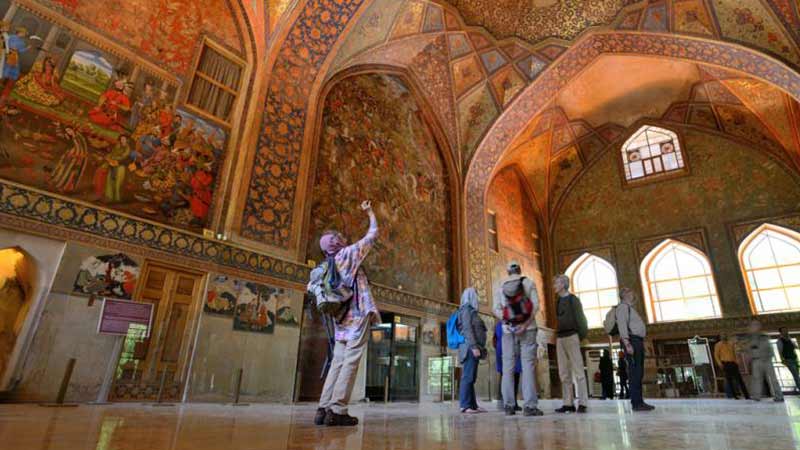
In the middle of Chehel Sotoun Garden, Shah Abbas built a European-style mansion with small rooms around it, known as the initial core of the Chehel Sotoun Palace. This courtly garden was used for hosting royal guests during ceremonies and celebrations. During the reign of Shah Abbas II, the seventh Safavid king, the Chehel Sotoun mansion was expanded, adding halls and verandas. These included the Mirror Hall, the Eighteen-Column Hall, two large rooms north and south of the Mirror Hall, verandas on both sides of the royal hall, and a large pool in front of the hall with all its decorative paintings, mirror work, and tile work on walls and ceilings. The extensive halls of the palace were also used for public receptions and official hospitality during the reign of Shah Abbas II. The palace was inaugurated in 1056 AH in the presence of Shah Abbas II and foreign ambassadors.
Based on the dates mentioned in the poems of some Safavid-era poets and consulting books and texts from that time, the completion year of Chehel Sotoun Palace is believed to be 1057 AH, during the reign of Shah Abbas II. Among these poets was Saeb Tabrizi, the court poet of the time, who described Chehel Sotoun in a long poem, ending with the line “May this place be the eternal abode of kings,” indicating the year 1057 AH.
In the twelfth year of Shah Sultan Hossein’s reign, the Chehel Sotoun Palace caught fire and was subsequently repaired, likely restored to its original state. According to travelers like Flandin and Coste during the reign of Mohammad Shah Qajar, and Madame Dieulafoy in 1298 AH, Chehel Sotoun Garden remained in its original state; however, significant damage was inflicted intentionally on this building during the reign of Zell-e Sultan, son of Naser al-Din Shah and governor of Isfahan, after 1300 AH.
Architecture of Chehel Sotoun Palace
The architecture of the palace is a blend of Chinese, Iranian, and European art. The building consists of a main veranda (large) measuring 38 meters in length, 17 meters in width, and 14 meters in height, facing east. The veranda’s octagonal columns are made of plane and pine wood. The four central columns stand on four stone lions.
The palace’s pool, besides being beautiful, also contributes to the coolness of the air. Around this pool are statues that do not belong to the Chehel Sotoun Mansion and were moved here during the demolition of the covered palace. According to some historians, this building experienced a major fire in the late Safavid period, and parts of it were burned.
Works such as the main gate of the Qotbiyeh Mosque and the gates of the Darb Kooshk corner, as well as artifacts from the Darb Jobareh Mosque and the Aghasi Mosque, are located on the western and southern walls of the garden.
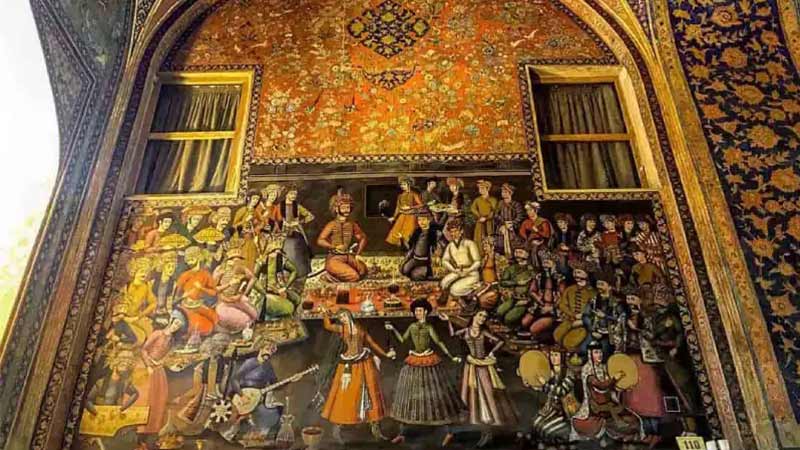
The Chehel Sotoun Palace Building
The veranda of Chehel Sotoun Palace consists of two parts; one part rests on 18 slender wooden columns, and the four central columns stand on four stone lions. In the past, water fountains flowed from the mouths of these lions into a marble pool in the hall.
The other part, slightly higher, forms the entrance to the hall, referred to as the Mirror Hall in some sources. This part stands on two columns and is adorned with extensive and intricate mirror work, featuring small, finely decorated mirrors arranged in marquetry alongside full-length and brick-shaped mirrors. The hall’s ceiling is made of wooden frames in various geometric shapes. The reflection of the central marble pool on the veranda is seen in the ceiling decorations, closely resembling the veranda of Ali Qapu.
Chehel Sotoun, a historical palace, is renowned for its intricate wall and ceiling designs, showcasing a beautiful blend of painting, tile work, and other diverse decorations. These elements, arranged in elegant patterns known as “Lachak” and “Toranj,” contribute to making this palace one of the finest examples of Safavid era architecture. Today, Chehel Sotoun functions as a garden museum, with its main hall displaying various Iranian art pieces from different periods.
Paintings of Chehel Sotoun Palace
The central hall of the palace, designated for foreign guests and dignitaries, features paintings that depict historical events from various periods. This magnificent hall is adorned with a decorated dome, colorful geometric patterns, and golden, transparent designs, marking it as an artistic masterpiece of its time.
The central hall’s paintings, some of which were created during the Qajar era, illustrate receptions held by Shah Abbas I and II, Shah Tahmasb for emirs from Turkestan and India, as well as Shah Ismail I’s battle with the Uzbeks. Two other paintings, one facing the entrance and the other opposite it, depict the Battle of Chaldiran during Shah Ismail I’s reign and the Battle of Karnal in Nader Shah Afshar’s time. These were painted in the early Qajar era. The hall is flanked by rooms used for seasonal exhibitions, featuring paintings considered masterpieces of Persian art. Many of these were hidden under plaster during the rule of Zill al-Sultan and have been restored by experts.
On both sides of the central hall, there are paintings of ambassadors and Europeans who were in Isfahan at the time. These were painted by two Dutch artists, Angel and Locar. The palace also houses a portrait of Shah Abbas I with his special crown, other miniatures in the treasury room, and large paintings of Safavid kings in the royal hall.
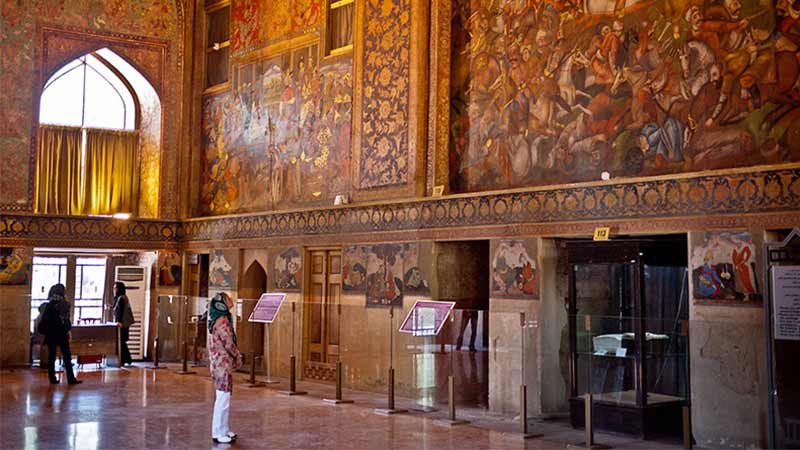
Best Time to Visit Chehel Sotoun Palace
Spring, particularly the month of Ordibehesht, is the ideal time to visit Chehel Sotoun Palace due to the pleasant weather and the lush surrounding garden. Summer evenings are also popular for their cooler temperatures. For photography enthusiasts, the best time for pictures is between 9 and 11 AM, when the sunlight directly illuminates the palace. At night, the palace is beautifully lit, offering a different perspective.
Visiting Hours for Chehel Sotoun Palace
The palace is open every day except on Tasu’a, Ashura, the demise of Prophet Muhammad (PBUH), Imam Khomeini, and the martyrdom anniversaries of Imam Jafar Sadiq and Imam Ali. Visiting hours are from 9 AM to 5 PM.
Conclusion
In summary, Chehel Sotoun Palace is a stunning example of Persian art and architecture, blending history and beauty in Isfahan, Iran. Its captivating frescoes, mirrored hall, and elegant pool make it a must-see landmark. If you enjoyed reading about Chehel Sotoun Palace, please share your thoughts or questions in the comments. We always appreciate hearing from you!

